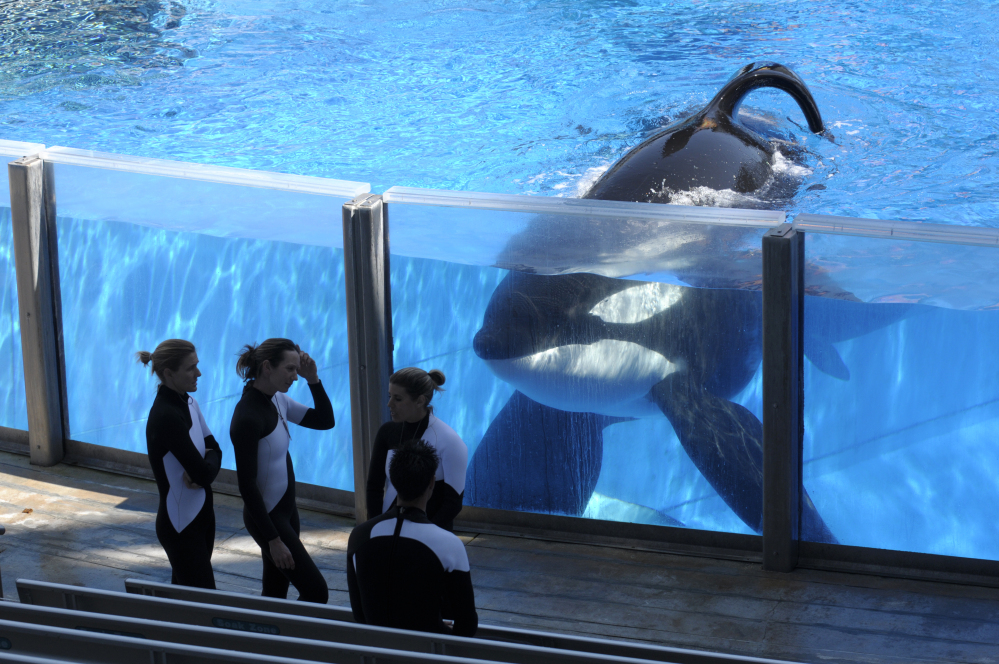The whale was featured in a documentary that sparked SeaWorld to end captive whale program.
ORLANDO, Fla. — Tilikum the orca has died after more than two decades at SeaWorld Orlando, where he gained notoriety for killing a trainer in 2010 and was later profiled in a documentary that helped sway opinion against keeping killer whales in captivity.
He will not be replaced. He was the first of SeaWorld’s orcas to die since the company announced the end of its orca breeding program in March 2016.
In a statement announcing Tilikum’s death early Friday, SeaWorld officials said he had serious health issues including a persistent and complicated bacterial lung infection. Tilikum was estimated to be 36 years old. A necropsy will determine the cause of death.
The 2010 death of SeaWorld trainer Dawn Brancheau during a performance with Tilikum after a “Dine with Shamu” show shocked the public and changed the future of orcas at SeaWorld parks.
Brancheau was interacting with Tilikum before a live audience at SeaWorld Orlando when he pulled her from a platform by her arm and held her underwater. An autopsy report said Brancheau drowned but also suffered severe trauma, including multiple fractures.
Former SeaWorld orca trainer John Hargrove said Tilikum’s death offered some closure in the violent death of his friend and colleague. But he said Tilikum also finally found relief.
“Tilikum has been sick, very sick, for so long, and after everything he’s had to endure, this is to me like he’s free,” said Hargrove, who left SeaWorld in 2012 and was featured in the documentary “Blackfish.”
“He lived a tortured existence in captivity. I think all the whales do, but if you had to pinpoint one of them, hands down I would say Tilikum.”
Animal rights advocates who want orcas and other marine mammals at SeaWorld parks released into sea pens or coastal sanctuaries said Tilikum was snared in a business model that led only to tragedy. Lisa Lange, senior vice president for the group People for the Ethical Treatment of Animals, urged SeaWorld to release its remaining orcas and marine mammals to “spend the rest of their lives in as natural a setting as possible.”
SeaWorld supporters found something worthwhile in Tilikum’s time at the park.
“His story is a complicated one, but I also think he represented his species well,” said Grey Stafford, president of the International Marine Trainers’ Association. He’s also a former SeaWorld employee, though he never worked with Tilikum. “In retrospect, there are a lot positives to say.”
SeaWorld President and CEO Joel Manby said, “Tilikum had, and will continue to have, a special place in the hearts of the SeaWorld family, as well as the millions of people all over the world that he inspired.”
According to National Oceanic and Atmospheric Administration figures , male killer whales in the wild typically live about 30 years and females typically live about 50 years. Institutions displaying marine mammals and their critics disagree over whether orcas’ life expectancy in captivity differs from their life span in the wild.
Tilikum had been SeaWorld’s most prolific male orca, siring 14 calves since his arrival at the park about 25 years ago. He was noticeable for his size at more than 22 feet and 11,800 pounds.
Copy the Story LinkSend questions/comments to the editors.



Success. Please wait for the page to reload. If the page does not reload within 5 seconds, please refresh the page.
Enter your email and password to access comments.
Hi, to comment on stories you must . This profile is in addition to your subscription and website login.
Already have a commenting profile? .
Invalid username/password.
Please check your email to confirm and complete your registration.
Only subscribers are eligible to post comments. Please subscribe or login first for digital access. Here’s why.
Use the form below to reset your password. When you've submitted your account email, we will send an email with a reset code.